 |
by Igor Bonifacic on (#5TFD4)
Sony's latest console may be a few years old at this point, but it's still got plenty to offer - including some of the best games of this generation. Whether you just got a new PS5 or PS5 Pro, or you've had yours for a little while, you may want to give it a refresh of sorts by investing in some new accessories. Luckily, there are tons to choose from. These are the best PS5 accessories we've come across, plus some of the best games you should try out if you haven't already. Best PS5 accessories This article originally appeared on Engadget at https://www.engadget.com/gaming/playstation/best-playstation-5-accessories-140018902.html?src=rss
|
 Engadget is a web magazine with obsessive daily coverage of everything new in gadgets and consumer electronics
Engadget is a web magazine with obsessive daily coverage of everything new in gadgets and consumer electronics
| Link | https://www.engadget.com/ |
| Feed | https://www.engadget.com/rss.xml |
| Copyright | copyright Yahoo 2025 |
| Updated | 2025-12-25 22:17 |
 |
by Rob Webb on (#72D2X)
Setting up a PS5 for a child means you can offer an age-appropriate and safe platform for them to play. Sony made its parental control tools more comprehensive in recent years and they allow families to manage screen time, block unsuitable content, guide online interactions and approve purchases. The process is straightforward once the right menus are in view, but it helps to understand how each feature works before handing over the controller.The system uses individual accounts for each family member, and these accounts determine what a child can access. A parent or guardian assigns restrictions to the child's profile and the console enforces them more consistently than earlier PlayStation systems. The process begins with creating a child account, then linking it to the Family Management section of the adult account, and finally adjusting controls on the console itself.Create a child account through Family ManagementA child account is required before you can use any parental controls. This account is linked to the family manager's PlayStation account and cannot be converted into an adult account until the child reaches the appropriate age under local regulations.From the PS5 Home screen, navigate to Settings, Family and Parental Controls then choose Family Management. The system will request the family manager's password before any changes can be made. Select Add Family Member and choose Add a Child. The console generates a QR code that opens a secure PlayStation webpage on a phone or browser. This page guides the setup process and ties the new account to the family group.The form asks for the child's date of birth first. Sony uses this to assign default age restrictions and to determine which features are allowed. A small credit card charge may be requested to verify the adult's identity. The next steps involve entering an email address for the child, creating a password and selecting basic settings for content access, communication and spending. The child account must then be verified through a link sent to the provided email address. This ensures the account can use PlayStation Network features including any future purchases through the PlayStation Store.Once complete, the new profile appears in the Family Management list on the PS5. This profile is now ready for fine-tuning.Manage parental controls on the consoleThe PS5 keeps all parental controls in Family and Parental Controls within the main Settings menu. This section is organized into Playtime Settings, Content Restrictions, Communication and User-Generated Content and Spending controls. Each area can be adjusted separately for every child account in the family group.How to set limits on playtimePlaytime controls help set boundaries for gaming sessions. Select the child's profile, then open Playtime Settings. Limits can be set by total daily hours or by specific time windows. The console can be configured to notify the child when time is nearly up, or to log them out automatically once the limit is reached. These settings apply across the child's account, so they remain active even if the child switches between PS5 consoles in the same household.Parents can choose how strictly the system enforces these rules. For example, the console can continue to display warnings without blocking gameplay or it can stop activity when the allotted time ends. Playtime reports can also be viewed through the family manager's PlayStation account or the PS App.How to restrict content based on age ratingsSony's content filters are based on age ratings from the ESRB in the United States and equivalent regional boards in other countries. In Family Management, select the child's profile and then select Parental Controls. Here, parents can set an age level for games. Titles above this level will not launch without approval from the family manager.Blu-ray and DVD content can also be restricted and the system browser can be disabled entirely. If the family uses services that stream movies or TV shows through the console, those apps often apply their own content filters, but the PS5 can serve as a first line of control.EngadgetHow to manage communication and online interactionsOnline communication can be limited to prevent unwanted contact. In Parental Controls, select Communication and User-Generated Content. This area controls messaging, voice chat, profile sharing and the ability to see or share player-created media such as screenshots and video clips.Online play can also be adjusted. For younger kids, it may be helpful to block online multiplayer entirely until they better understand online etiquette and safety. For older children, communication can be limited to friends only. The PS5 respects these limits across all supported games.How to set spending limits for purchasesA child account cannot use payment cards directly, but it can spend funds from the family manager's wallet. Spending limits can be set in the child's profile under Family Management. Parents can choose a monthly spending cap or block purchases altogether. Any attempt to exceed the limit requires approval from the family manager.This feature covers games, add-ons, subscriptions and in-game currency. It ensures surprises on the credit card are less likely, especially in titles that promote quick digital purchases.How to sign your child into the PS5Once controls are set, the child can be added as a user on the console. Return to the home screen and select the user icon to switch users. Choose Add User, then select Get Started. Sign in using the child account's email address and password.The console guides the profile setup process and prompts for an online ID, avatar and privacy preferences. These steps help personalise the child's space on the PS5. The system may request a locally created passcode that prevents access to parental controls without the family manager's approval. This passcode should be unique and not shared with the child.After setup is complete, the child will see a version of the PS5 tailored to the restrictions applied. Games that exceed the assigned age rating will appear with a lock icon and the console will block any actions that the family manager has limited.Use the PS App and PlayStation's online tools for ongoing managementPlaytime and permissions can be managed remotely through Sony's PS App or the PlayStation website. This makes it easier to adjust rules without taking over the TV. The app also provides notifications when playtime is running low or when the child attempts to access restricted content.Sony's Family Management tools synchronise across devices. Changes made from a phone appear on the PS5 within seconds. This helps maintain consistent rules, especially in homes with more than one console.A child-ready PS5 is more than a restriction tool. It creates a safer environment for learning how to navigate digital spaces, interact with friends and handle screen time. Sony's updated controls take much of the pressure off parents by enforcing rules in predictable ways that are difficult to bypass. Once everything is configured, the child can enjoy the console's library while staying within the boundaries that support healthy gaming habits.This article originally appeared on Engadget at https://www.engadget.com/gaming/playstation/how-to-set-up-a-ps5-for-a-child-160039866.html?src=rss
|
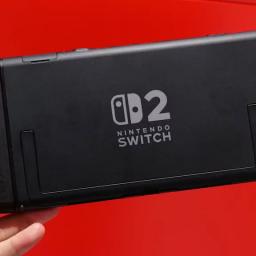 |
by Georgie Peru on (#72D09)
Upgrading to the Switch 2 is a big step forward, thanks to the larger screen, new features and improved performance. But shifting to a new console naturally raises the question of what happens to all your games and save data on the one you already have. Thankfully, Nintendo has built a clear System Transfer process that lets you move your account, digital purchases, save files and other key data from your original Switch to the Switch 2. If you prepare ahead of time, you can be back to playing your favorite titles on new hardware in minutes.We'll walk you through everything you need to know, including what transfers, how to start the process and what to check once you're set up.Before you transfer: A quick checklistRunning through these steps first will save you time later:
|
 |
by Liz Kocan,Danica Creahan on (#72CTN)
Christmas Day famously belongs to football. This Dec. 25, there are three NFL games to watch: the Dallas Cowboys vs. Washington Commanders, the Detroit Lions vs. the Minnesota Vikings and the Denver Broncos vs. Kansas City Chiefs. Here's what you need to know about Thursday's football slate, and the rest of the Week 17 schedule. How to watch the NFL Christmas Day games: Date: Thursday, Dec. 25, 2025 Start times: 1 PM ET, 4:30 PM ET, 8:15 PM ET TV channels: N/A Streaming: Netflix, Prime Video 2025 Christmas Day NFL game slate: Thursday, Dec. 25, 2025
|
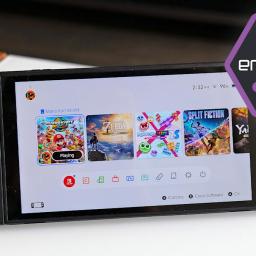 |
by Engadget on (#6Z81X)
One of the best things about the Switch 2 is how familiar it feels if you have used any previous Switch console. You can still move between handheld and TV play without thinking about it, and most of your favorite games come along for the ride. Nintendo's compatibility page highlights the rare titles with quirks, while its transfer guide helps you bring over your data so you can pick up right where you left off.
|
 |
by Ian Carlos Campbell on (#72CPR)
Starting at around 1PM ET on December 24, Steam experienced an outage that impacted users ability to access the game store and play games online. Valve didn't acknowledge the outage publicly, but SteamDB's unofficial Steam Status page reported that the Steam Store, Steam Community, and Steam Web APIs were all offline.DownDetector received over 6,000 outage reports around 1:15PM ET, and Steam was also inaccessible from Valve's mobile apps. The outage appears to have affected APIs for Valve's online games, like Team Fortress 2, Dota 2 and Counterstrike 2, as well.By around 4PM ET, Steam itself had begun to rebound, and as of 6PM ET, the platform had largely recovered, with the main PC, mobile and Mac clients broadly fully functional, but ocassionally erroring out. There are still parts of the service that are extremely sluggish and, according to SteamDB, many of Valve's online games are down or only partially functional. Upon checking at 4AM on December 25, all services seem to have been restored. The Steam Web API, Store and Community are working normally, and all games are running as usual.Steam's last major outage was in October, when the store and online services were unavailable for an hour. Earlier in September, the launch of Hollow Knight: Silksong temporarily took down Steam, the Xbox Store and Nintendo's eShop due to how many people tried to download the game at the same time.Update, December 25, 2026 4:23AM ET: This story has been updated to noted that Steam services have been restored.Update, December 24, 6PM ET: This story has been updated to note which Valve offerings are currently functional and when they recovered.This article originally appeared on Engadget at https://www.engadget.com/gaming/pc/steam-and-valves-online-games-are-partially-down-191033988.html?src=rss
|
 |
by Lawrence Bonk on (#72CPS)
Back in November, Sony started selling PS5 consoles at a $100 discount as part of a Black Friday/Cyber Monday promotion. The deal officially sunsets at 3AM ET, so now is a good time to bite the bullet on a gaming console given that prices aren't likely to go down anytime soon. You can pick up a regular disc-based PS5 for $450 and a digital model for $400. The beefy PS5 Pro is available for $650. All of these deals are active on Amazon, but also directly from Sony. If the costs here still sound a bit high, that's because Sony raised console prices by $50 back in August. In other words, these $100 discounts are pretty much $50 discounts when factoring in that recent increase. Still, cheaper is cheaper. This puts the digital PS5 at the same price as an Xbox Series S and the disc-based version at the same price as a Switch 2. Both standard PS5 configurations won't arrive until December 28. The PS5 Pro, however, is available for same-day shipping if you're jonesing for one last holiday gift. The PS5 has a fairly large stable of exclusive titles made by Sony-owned studios. These include games like Horizon Forbidden West, Astro Bot, Death Stranding 2 and Ghost of Yotei. This article originally appeared on Engadget at https://www.engadget.com/gaming/playstation/todays-the-last-day-to-get-100-off-the-ps5-and-ps5-pro-181454333.html?src=rss
|
 |
by Sam Chapman on (#6ZNAT)
It's the night before Christmas, and holiday VPN deals are going strong. It's a great time to grab a last-minute subscription for yourself or a loved one. With access to a virtual private network (VPN), you can stream TV shows and events from all over the world, protect your information from hackers and thwart online trackers. It might be cute that Santa sees you when you're sleeping and knows when you're awake, but Russian hacker collectives and the Amazon marketing department don't really share St. Nick's charm.Although we strongly recommend using a VPN, jumping on the first deal that comes along might get you stuck with a substandard app. Beyond that, even otherwise respectable VPNs sometimes frame their prices in misleading ways, with advertised deals not always as available as they seem to be.Even so, there are some great bargains on the table. For the holiday season, plenty of the best VPNs - including our top pick, Proton VPN - have end-of-year deals live that can save you anywhere from 67 to 88 percent on annual subscriptions. Most of these discounts only apply if you sign up for a year or more, but as long as you're comfortable with a service before you take the plunge, committing actually makes sense. You pay more at the start, but if you divide the cost by the months of subscription, it's much cheaper over time.Best VPN dealsExpressVPN Basic - $97.72 for a two-year subscription with four months free (73 percent off): This is one of the best VPNs, especially for new users, who will find its apps and website headache-free on all platforms. In tests for my ExpressVPN review, it dropped my download speeds by less than 7 percent and successfully changed my virtual location 14 out of 15 times. In short, it's an all-around excellent service that only suffers from being a little overpriced - which is why I'm so excited whenever I find it offering a decent deal. This discount, which gets you 28 months of ExpressVPN service, represents a 73 percent savings. Be aware, though, that it'll renew at the $99.95 per year price.ExpressVPN Advanced - $125.72 for a two-year subscription with four months free (67 percent off): ExpressVPN recently split its pricing into multiple tiers, but they all still come with similar discounts for going long. In addition to top-tier VPN service, advanced users get two additional simultaneous connections (for a total of 12), the ExpressVPN Keys password manager, advanced ad and tracker blocking, ID protection features and a 50 percent discount on an AirCove router. As above, note that it renews at $119.95 annually.NordVPN Basic - $80.73 for a two-year subscription with three months free (74 percent off): NordVPN gets the most important parts of a VPN right. It's fast, it doesn't leak any of your data and it's great at changing your virtual location. I noted in my NordVPN review that it always connects quickly and includes a support page that makes it easy to get live help. NordVPN includes a lot of cool features, like servers that instantly connect you to Tor. This holiday deal gives you 74 percent off the two-year plan, which also comes with three extra months.NordVPN Plus - $105.03 for a two-year subscription with three months free (74 percent off): In another holiday discount, NordVPN has also taken 74 percent off its Plus subscription. For only a little more, you get a powerful ad and tracker blocker that can also catch malware downloads, plus access to the NordPass password manager. A Plus plan also adds a data breach scanner that checks the dark web for your sensitive information.Surfshark Starter - $53.73 for a two-year subscription with three months free (87 percent off): This is the "basic" level of Surfshark, but it includes the entire VPN; everything on Surfshark One is an extra perk. With this subscription, you'll get some of the most envelope-pushing features in the VPN world right now. Surfshark can rotate your IP constantly to help you evade detection - it even lets you choose your own entry and exit nodes for a double-hop connection. That all comes with a near-invisible impact on download speeds. With this year-round deal, you can save 87 percent on 27 months of Surfshark.Surfshark One - $61.83 for a two-year subscription with three months free (88 percent off): A VPN is great, but it's not enough to protect your data all on its own. Surfshark One adds several apps that boost your security beyond just VPN service, including Surfshark Antivirus (scans devices and downloads for malware) and Surfshark Alert (alerts you whenever your sensitive information shows up in a data breach), plus Surfshark Search and Alternative ID from the tier below. This extra-low deal gives you 88 percent off all those features. If you bump up to Surfshark One+, you'll also get data removal through Incogni, but the price jumps enough that it's not quite worthwhile in my eyes.CyberGhost - $56.94 for a two-year subscription with two months free (83 percent off): CyberGhost has some of the best automation you'll see on any VPN. With its Smart Rules system, you can determine how its apps respond to different types of Wi-Fi networks, with exceptions for specific networks you know by name. Typically, you can set it to auto-connect, disconnect or send you a message asking what to do. CyberGhost's other best feature is its streaming servers - I've found both better video quality and more consistent unblocking when I use them on streaming sites. Currently, you can get 26 months of CyberGhost for 83 percent off the usual price.hide.me - $69.95 for a two-year subscription with four months free (75 percent off): Hide.me is an excellent free VPN - in fact, it's my favorite on the market, even with EventVPN and the free version of Proton VPN as competition. If you do want to upgrade to its paid plan, though, the two-year subscription offers great savings. Hide.me works well as a no-frills beginner VPN, with apps and a server network it should frankly be charging more for.Private Internet Access - $79 for a three-year subscription with four months free (83 percent off): With this deal, you can get 40 months of Private Internet Access (PIA) for a little bit under $2 per month - an 83 percent discount on its monthly price. Despite being so cheap, PIA has plenty of features, coming with its own DNS servers, a built-in ad blocker and automation powers to rival CyberGhost. However, internet speeds can fluctuate while you're connected.What makes a good VPN dealPractically every VPN heavily discounts its long-term subscriptions year-round, with even sharper discounts around occasions like the holidays. The only noteworthy exception is Mullvad, the Costco hot dog of VPNs (that's a compliment, to be clear). When there's constantly a huge discount going on, it can be hard to tell when you're actually getting a good deal. The best way to squeeze out more savings is to look for seasonal deals, student discounts or exclusive sales like Proton VPN's coupon for Engadget readers.One trick VPNs often use is to add extra months onto an introductory deal, pushing the average monthly price even lower. When it comes time to renew, you usually can't get these extra months again. You often can't even renew for the same basic period of time - for example, you may only be able to renew a two-year subscription for one year. If you're planning to hold onto a VPN indefinitely, check the fine print to see how much it will cost per month after the first renewal, and ensure that fits into your budget.Follow @EngadgetDeals on X for the latest tech deals and buying advice.This article originally appeared on Engadget at https://www.engadget.com/deals/the-best-vpn-deals-up-to-88-percent-off-protonvpn-surfshark-expressvpn-nordvpn-and-more-120056445.html?src=rss
|
by Amy Skorheim on (#6A14K)
Price hikes, media consolidation and contract disputes that turn channels dark have made live TV streaming services feel a lot more like cable. But, for most people it's still a better deal to cut the cord. For sports fans and news junkies, there's still no better option than one of the best live TV streaming services. We tried all the major players and currently recommend YouTube TV for most people. But we also spelled out just what you get from other providers (along with what we think about them) so you can decide for yourself.
 |
by Rob Webb on (#72CKR)
Creating a child-friendly iPad takes a few extra steps, but Apple's tools make the process relatively straightforward. From creating a child's Apple ID to adjusting Screen Time and privacy settings, you can shape how your child uses the device and protect them from inappropriate content. The process varies slightly depending on whether the iPad is new or already in use, but the principles are the same: set up a managed account, connect it to Family Sharing and fine-tune the controls that keep your child's digital space safe.Create an Apple ID for your childEvery kid using an iPad should have their own Apple ID. This allows you to manage their account through Family Sharing and gives them access to features like iCloud, the App Store and Messages under your supervision. Apple requires parents to create accounts for children under 13, which can be done directly from your own device.Open the Settings app on your iPhone or iPad, tap your name at the top and select Family. Tap Add Member, then Create Child Account, and follow the onscreen prompts. You'll need to provide your child's name and birth date, along with parental consent using your own Apple ID password. Once created, the account is automatically added to your Family Sharing group.If your kid already has an account, you can invite them to join your Family Sharing setup instead. On the iPad, go to Settings > Family > Add Member, then select Invite People to send a request to their existing Apple ID email address. When they accept, you'll be able to manage parental controls from your own device.Add your child to Family SharingFamily Sharing brings all your family's Apple devices together under one umbrella. It lets you share subscriptions, purchases and iCloud storage, while giving you oversight of your child's activity. The Ask to Buy feature, for example, requires your approval before your child can download apps or make in-app purchases, helping to avoid surprise charges.To enable Family Sharing on your iPad, go to Settings > [your name] > Family, then tap Add Member if your child isn't already added. You can manage shared purchases, location sharing and Screen Time settings from here. Linking devices through Family Sharing also makes it easier to locate a lost iPad and maintain consistent restrictions across all your family's devices. For broader setup advice, see Engadget's guide on how to set up a phone or tablet for a child.Set up Screen Time and parental controlsOnce your child's account is linked, you can use Screen Time to manage how the iPad is used. Screen Time is found under Settings > Screen Time, and it lets you set time limits, restrict certain apps, and monitor usage reports.When first opening Screen Time on your child's iPad, tap This is My Child's iPad. You'll be prompted to create a unique Screen Time passcode. This passcode is different from the iPad's unlock code and prevents your child from changing settings without permission, so make sure you remember it. From here, you can configure several key features.Downtime allows you to block all but essential apps and calls during certain hours, such as bedtime or homework time. App Limits sets daily time limits for categories such as games, entertainment or social networking. You can also set Communication Limits to control who your child can contact throughout the day and during Downtime, which is useful for if you only want them to message family members or trusted friends. The Always Allowed section lets you choose essential apps, such as Messages or educational tools, that remain accessible at all times.You can adjust these settings from your own device if your child is part of your Family Sharing group. Screen Time reports provide detailed insight into how the iPad is used, so you can see which apps are used the most and make adjustments as needed.Enable Content and Privacy RestrictionsContent and Privacy Restrictions offer finer control over what your kid can and cannot do with their iPad. To enable them, go to Settings > Screen Time > Content & Privacy Restrictions, and toggle them on.Within this menu, you can manage App Store purchases and downloads, disabling in-app purchases or preventing your child from installing or deleting apps. You can also filter explicit content in Apple Music, TV, and Books, and apply web restrictions in Safari to limit adult content. Under Web Content, choose Limit Adult Websites or specify certain sites that are allowed or blocked.Privacy controls extend beyond content. You can manage location services, camera and microphone access and other sensitive permissions. For example, turning off location sharing in certain apps can help safeguard your child's privacy. You can also prevent changes to accounts, passcodes and cellular settings, ensuring that restrictions remain consistent.Fine-tune privacy and safety settingsBeyond Screen Time, Apple includes additional tools to make iPads safer for children. In Safari, you can enable SafeSearch to filter explicit results in search engines. Restrict AirDrop under Settings > General > AirDrop to limit sharing to Contacts Only or turn it off completely, reducing the potential for exposure to unsolicited files.Messages includes a Communication Safety feature that uses on-device machine learning to detect sensitive images. When enabled, the iPad will blur images that contain nudity and offer guidance before the child can view them. You'll find this under Settings > Screen Time > Communication Safety. It works entirely on the device and doesn't send data to Apple, preserving privacy while offering extra protection.If your child uses Game Center, you can limit multiplayer games, profile visibility and the ability to add friends. These small adjustments can prevent unwanted social interactions or exposure to inappropriate content in online games.Use Guided Access for younger childrenFor younger children or toddlers, Guided Access can keep them focused on a single app and prevent them from accidentally navigating elsewhere. To enable it, open Settings > Accessibility > Guided Access, then toggle it on and set a passcode.Once it's active, open the app you want your child to use and triple-click the top button (or the Home button on older models). Guided Access locks the iPad to that app until you end the session with your passcode. You can disable hardware buttons or touch input areas to avoid navigating elsewhere in the app or accessing playback controls. This feature is ideal when you want your child to watch a video or use an educational app without interruption.Keep everything up to dateAfter initial setup, it's important to revisit these settings occasionally. Children's needs change as they grow, and Apple regularly adds new parental features with each iPadOS update. Keep the iPad updated by going to Settings > General > Software Update, and review restrictions periodically to ensure they still fit your child's age and usage patterns.Setting up an iPad for your child isn't just about managing screen time or blocking certain apps. It's about creating a space that encourages safe exploration while maintaining healthy boundaries. With Apple's parental tools, you can find the right balance between freedom and supervision, making the iPad a secure and educational part of your child's digital world.This article originally appeared on Engadget at https://www.engadget.com/mobile/tablets/how-to-set-up-an-ipad-for-a-child-160001671.html?src=rss
|
 |
by Andre Revilla on (#72CHS)
A pro-Russian hacker group has come forward as the perpetrator of a DDoS attack on the French national postal service La Poste that took place on December 22, according to Reuters. The distributed denial-of-service attack took central computer systems at La Poste entirely offline and caused major disruptions in package deliveries just days before Christmas.Reuters reported that the cyberattack on La Poste was still not fully resolved as of Wednesday morning. While regular letters were not affected, postal workers were unable to track packages and online payments through La Banque Postale, the service's banking division, were also disrupted.The group, known as Noname057, has taken responsibility for or been accused of cyberattacks across the globe. Though attacks have occurred in over a dozen nations, the group has mostly targeted Ukraine as well as Ukraine-friendly nations.Europol, the EU's law enforcement agency, launched an extensive operation against the group this summer. The US Justice Department has also been involved in actions against the hacker group.This article originally appeared on Engadget at https://www.engadget.com/cybersecurity/pro-russian-hacker-group-claims-responsibility-for-ddos-attack-on-french-postal-service-140015323.html?src=rss
|
 |
by Steve Dent on (#72CHT)
I've always wondered what it would be like to own a plug-in hybrid, and recently, fate handed me that opportunity. On a recent trip to Vancouver, I rented a 2024 Toyota Prius Prime for nearly two months - the ideal scenario to try out North America's most popular PHEV.My experience with the Prius PrimePreviously, the words "Prius" and "sexy" were rarely used in the same sentence. However, I think the wedge-shaped Prius Prime introduced for 2023 is much sexier than its frumpy predecessors. The sleek shape also pierces the wind better to improve efficiency. It's lower to the ground than before, though, which can make entry tough for taller or older people.I was comfortable in the Prius Prime once seated, even though the materials and options aren't quite as luxurious as other PHEVs sold in the US. On two 10-hour highway drives up to northern Canada I never felt sore (or cold) in the well-bolstered, heated seats. However, visibility wasn't the greatest due to the low seating position and thick front pillars that occasionally blocked my view of traffic.Steve Dent for EngadgetWith its wraparound dash and 8-inch touchscreen, the interior is reasonably high-tech but not to the standard of some EVs I've tried recently. It came with wireless CarPlay and Android Auto support that gave me seamless streaming entertainment on long highway stretches. The driver safety features (lanekeeping, adaptive cruise, automatic braking and more) also boosted my confidence in Vancouver's gnarly traffic. The Prius Prime doesn't offer true one-pedal implementation, but it has a mode that's close to that.With a two-liter 150 HP gas motor and 161 HP electric motor (net 220 HP combined), the 2024 (fifth generation) Prius Prime has a whopping 100 more horsepower than the previous model. The electric drivetrain is supplied by a 13.6kWh battery (10.9kWH usable) that takes four hours to charge at 240 volts, or double that with 120-volt household electricity. That means you can juice it fully overnight, but it doesn't have DC fast-charging for speedy power-ups on longer trips. The EPA electric range is 44 miles, 19 more than the fourth-gen Prius.It accelerated surprisingly well (from 0 to 60mph in 6.7 seconds) and was agile, but had a fair amount of body roll since it's not designed for the race track. Still, considering the Prius's reputation as a staid hippie econobox, the new model was downright sporty. I enjoyed driving in the all-electric mode much more than the hybrid mode, though - it was quieter and smoother, with lower noise levels and vibration.So, how far was I able to drive on that electric motor alone? On the highway at about 65 MPH, I eked out 30 miles and just over 40 miles in the city. On one trip, I drove from the city center to a suburb 30 miles away and made it there and partially back on a full charge. On another voyage, I was able to drive back and forth between the east- and west-most points of Vancouver (13 miles) - a typical commute for many city-dwellers - with about a quarter charge to spare.Steve Dent for EngadgetWith consistent charging, my fuel consumption over a two week period (averaging 25 miles per day) was about a quarter of a tank or around $7.50. In terms of electricity, I used nearly 70.5kWh during that time at $.085/kWh, for a total of $6. All told, I spent $13.50 for gas and electricity over 350 miles of mixed driving, so the Prius Prime was clearly cheap to operate.For longer trips, it's still as inexpensive as it gets for a gasoline-powered vehicle, thanks to the efficient ICE motor and hybrid system that's among the best in the industry. With a full battery charge and tank, I set out on a 547-mile drive and travelled 470 miles before stopping for gas, with a quarter tank to spare. That fill-up cost around $25.The true savings and the problem with plug-in hybridsThe timing for my test of this car was ideal. In October, I spotted a European study concluding that PHEVs aren't as economical as expected over a large sample size. Engadget's article about that stirred up some passion among owners and potential buyers, so I wanted to compare my experience with points in the study.First, let's see if a PHEV is worth the extra money compared to a regular hybrid. My calculations are for the average US buyer and don't take state or federal clean air rebates into account.When I chose to rent a "compact" car, Avis assigned me a mid-range Prius Prime XSE - a model that lists at $37,320 but typically sells for $34,590, according to Edmunds. That suited me well as it only lacked a few features of the high-end XSE Premium, notably the larger 13.2-inch infotainment display and solar roof option. A fully equipped 2026 XSE Premium model with those features costs $41,665.Steve Dent for EngadgetSince Toyota also makes a regular hybrid Prius, that vehicle offers an ideal comparison. The equivalent Prius XTE model has a list price of $31,995 in a similar configuration, making it $5,325 cheaper than the Prius Prime XSE.The average US driver covers 13,662 miles per year and gasoline currently has a median $3 per gallon price. Over that distance, a non-PHEV Prius driver could expect to burn 273 gallons at 50 MPG (EPA combined) in a year, spending $819 on fuel.A Prius Prime driver, on the other hand, would use 70 to 85 percent less fuel by current EPA or WLPT estimates. If we generously take the high end of those numbers at 85 percent, that cuts fuel costs to $160. That would require using about 2,500 kWh of electricity, though, so at an average US price of $0.18/kWh, that amounts to $450, for a total of $610 (gas plus electricity). That means you'd save just $209 in a year, or $2,090.00 over 10 years - not enough to justify the extra price. (Fuel and electricity prices, usage and other factors vary by region and can have a big impact on those figures.)It could be even worse than that, according to a European automotive thinktank called Transport & Environment (T&E). After gathering real-world OBFCM data from 800,000 vehicles, they determined that PHEVs only run in all-electric mode 27 percent of the time, rather than 84 percent as estimated by Europe's WLPT standard. As a result, plug-in hybrids in Europe emit five times more emissions and cost users 500 ($586) more per year than previously thought. Those figures are likely similar in the US.Steve Dent for EngadgetHow could regulators be so wrong about this key data? The first, obvious reason is that they underestimated how often people charge their vehicles. With their relatively short range, plug-in hybrids often need a full charge to get through the day in electric-only mode - but many people aren't doing that.Why? One reason may be a lack of easy charger access away from home. I found them to be difficult to find and use, often requiring a sign-up or app rather than just letting me tap a credit card (I'm looking at you, ChargePoint, Flo and Switch Energy). It can also be more expensive than just buying gasoline, since many companies charge triple or more the market rate for electricity. Another factor is that drivers of company or fleet PHEVs charge their vehicles less often than private owners.There's one additional and especially pernicious reason: The ICE engine often kicks in when PHEVs are supposedly running in all-electric mode, particularly with heavier sedans or SUVs. That's because the electric motors alone aren't powerful enough for maneuvers like passing.Larger batteries can boost all-electric usage, but only to a point. Beyond 45 miles of range, emissions actually increase. The reason is simple: "Long-range PHEVs are the heaviest in the dataset, averaging 28 percent more mass and 33 percent more engine power than the group just below," T&E wrote.Steve Dent for EngadgetOverall, I enjoyed my time with the Prius Prime and found it to be fun, practical and cheap to drive. It's the most economical PHEV because it has excellent electric range and enough power that the ICE engine rarely needs to kick in. At the same time, it offers the highest EPA mileage rating of any non-EV sold in North America. If I were in the market for a new vehicle, the Prius Prime would be high on my list.However, I also learned that PHEVs aren't reducing emissions or saving buyers as much as regulators and manufacturers have promised. Governments are to blame for much of that, as they overestimated all-electric use in PHEVs and failed to support the charging infrastructure needed to make them practical.Responsibility also falls to automakers and buyers. Consumers want SUVs, but manufacturers aren't making the electric motors in PHEVs powerful enough to run all the time in EV mode or offering fast DC charging. At the same time, drivers are failing to charge their vehicles consistently. Until those issues are solved, in my experience plug-in hybrids are a poor substitute for EVs in terms of emissions and a less economical choice than regular hybrids.This article originally appeared on Engadget at https://www.engadget.com/transportation/toyotas-prius-prime-saved-me-gas-money-but-probably-not-the-environment-133027378.html?src=rss
|
 |
by Rob Webb on (#72CG1)
Digital game codes remain one of the simplest ways to add new titles to a Nintendo library. The Nintendo Switch 2 handles code redemption in a familiar way, building on the same process used on the original Switch. You can redeem a download code directly from the eShop on the console, or through a browser on a phone or desktop. Both routes link the purchase to the same Nintendo Account so the redeemed title appears on any compatible device tied to that account. The process is quick once you know where to look. Here is how to redeem game codes on Switch 2 through the console and online.Things to know before you startA Nintendo Account is required and the Switch 2 must be connected to the internet for on-device redemption. Most codes contain sixteen characters made up of letters and numbers. The characters are displayed on a physical card, on a receipt or in a confirmation email from a retailer. The characters should be entered exactly as supplied. Each code can only be redeemed once and becomes linked to the Nintendo Account used during the process.How to redeem a game code on the Switch 2 via the eShopRedeeming a code through the Switch 2 itself is the most direct approach because the download begins as soon as the code is accepted.Start on the Switch 2 home screen and open the Nintendo eShop icon. The console will prompt you to choose the user profile that should receive the content. Each user profile has a separate eShop purchase history, so pick the correct one before moving on.Once the eShop loads, look for the Redeem Code option in the main menu. On the Switch 2, this appears in the left navigation panel alongside the store's standard browsing categories. Select Redeem Code to open a screen with an input field and the on-screen keyboard.Enter the sixteen-character code carefully. Codes may contain similar-looking characters particularly when numbers and letters appear in the same sequence. After entering the full set of characters select OK to move forward. The system checks the code and shows a confirmation page with the game or content tied to it.If the code is valid, select Redeem to finish the process. The game will appear on the home screen as soon as the redemption is complete. A progress bar shows the download status until the installation finishes. If the game includes a Switch and Switch 2 version, the system will prompt you to choose which version to download.If the game does not begin downloading head to the All Software view or the Download Management screen to confirm the status. The redeemed title should be visible with either a queued or active download.How to redeem a Switch 2 code onlineNintendo also supports online redemption through its digital store, which is useful if you are away from the console or prefer to type the code on a full keyboard. The redeemed title will still appear in your account's purchase history and can be downloaded later from the Switch 2.Open a browser on a phone, tablet or computer and go to the Nintendo Account login page. Sign in using the account linked to your Switch 2. Once logged in navigate to the code redemption page for the Nintendo eShop. This page contains a text box where you can paste or type the code.Enter the code exactly as provided and select Next. A confirmation screen appears with the game details. Select Redeem to finalize the action. The content is now tied to your account and ready to download on your console.If the console is in sleep mode and has auto downloads enabled, the game may start downloading immediately. Otherwise open the eShop on the Switch 2 later and check the Download Management section for your queued title.What to expect after redeeming a codeEvery redeemed game becomes part of your Nintendo Account's digital library. This applies across devices tied to the same account, which means that games purchased on a Switch or a browser will still appear when you sign in on a Switch 2. If the game supports cloud backup through Nintendo Switch Online, save data will sync once the game is installed.Some games offer separate versions for the original Switch and Switch 2. When this applies, you'll be asked to pick which version you want to download. The choice does not usually affect your ownership but it determines which software build is installed on the device.If a code fails, Nintendo advises checking that the characters are entered correctly and confirming that you are using a download code rather than a control number, which often appears on the same card. Codes for DLC downloads require the base game on the destination console. Region restrictions also apply so the code must match the region of your Nintendo Account's eShop.Why Switch 2 uses the same redemption system as the original SwitchThe Switch 2 keeps the familiar eShop structure that users have relied on since the original console. Keeping this process consistent simplifies the transition for families with multiple consoles and reduces the friction of carrying existing purchases forward. Nintendo Accounts continue to serve as the backbone for digital ownership which makes it easy to claim a code on one device and access the game on another.The updated interface on the Switch 2 adds clarity to navigation but code redemption still works the same way on both platforms. This continuity ensures that retailers can distribute standard sixteen-character download codes and users can rely on simple steps to activate them.This article originally appeared on Engadget at https://www.engadget.com/gaming/nintendo/how-to-redeem-game-codes-on-the-nintendo-switch-2-130059847.html?src=rss
|
 |
by Steve Dent on (#72CG2)
Ahead of CES 2026, Samsung has unveiled a number of impressive gaming monitors that flaunt 3D and very high refresh rates. The headliner is the 32-inch Odyssey 3D, "the world's first 6K display with glasses free 3D," according to Samsung. Along with the high resolution, it offers a 165Hz refresh rate (boosted to 330Hz through Dual Mode), along with a 1ms GtG response time. Optimized 3D effects that enhance terrain, distance and object separation "beyond 2D" will work with featured games like Stellar Blade and The First Berserker: Khazan," according to Samsung.Another model, the 27-inch Odyssey G6, brings refresh rates to a new level. It's the world's first 1,040 Hz monitor through Dual Mode and offers native QHD support up to 600Hz "to help players track targets and see fine details during high-speed movement," Samsung claims. It can provide instant performance boosts and is AMD FreeSync and NVIDIA G-Sync compatible.SamsungIf it's OLED you want, Samsung has that covered as well with the 32-inch Odyssey OLED G8. It pairs a 4K QD-OLED panel with a 240Hz refresh rate, while offering glare-free viewing and VESA DisplayHDR True Black 500 certification, though brightness is limited to 300 nits. It's DisplayPort 2.1 and HDMI 2.1 compatible with up to 80Gbps bandwidth, while supporting both AMD FreeSync Premium Pro and NVIDIA G-Sync.Finally, Samsung introduced two other new high-resolution Odyssey G8 models as well. The first is the 32-inch G80HS model with 6K resolution at up to 165Hz and the other is the 5K, 27-inch Odyssey G8 with native support up to 180Hz and Dual Mode boosting that to 360Hz in QHD. There's no word on pricing yet for any of these models, but we'll likely learn that early next year.This article originally appeared on Engadget at https://www.engadget.com/computing/accessories/samsungs-latest-odyssey-gaming-monitor-has-a-32-inch-6k-screen-with-glasses-free-3d-130051748.html?src=rss
|
 |
by Mariella Moon on (#72CG3)
The Trump administration has issued travel bans that prohibit five European tech researchers, including one former EU Commissioner, from entering the United States. For far too long, ideologues in Europe have led organized efforts to coerce American platforms to punish American viewpoints they oppose. The Trump Administration will no longer tolerate these egregious acts of extraterritorial censorship," said US Secretary of State Marco Rubio.That official is Thierry Breton, the former European Commissioner for Internal Markets and Digital Services, who Sarah Rogers called the mastermind" of the Digital Services Act. Rogers, the Under Secretary of State, said Breton threatened Elon Musk about ongoing formal proceedings for X's noncompliance with illegal content" and disinformation" under the DSA just before his meeting with President Trump. The administration has also banned Imran Ahmed from the Center for Countering Digital Hate (CCDH), who apparently called for American anti-vaxxers to be deplatformed. One of those people is Robert F. Kennedy, Jr., who's now the US Secretary of Health.Clare Melford from the UK-based Global Disinformation Index has also been banned. Her group monitors online platforms for hate speech. Anna-Lena von Hodenberg and Josephine Ballon from German organization HateAid, have been banned, as well. HateAid flags hate speech online for the EU under DSA rules.As The New York Times notes, these travel bans emphasize the administration's close relationship with internet and tech companies, which would benefit from having DSA rules loosened or abolished. The Global Disinformation Index called the travel bans an authoritarian attack on free speech and an egregious act of government censorship." Meanwhile, von Hodenberg and Ballon said the bans mark a new escalation. The US government is clearly questioning European sovereignty," they said.This article originally appeared on Engadget at https://www.engadget.com/big-tech/us-bans-former-eu-commissioner-and-others-over-social-media-rules-121804097.html?src=rss
|
 |
by Valentina Palladino on (#6V3H8)
If you've been shocked by how much you spend on streaming services lately, you're not alone. Companies like Netflix, Disney, HBO Max and others have been consistently raising prices to the point where you may question if streaming is even worth it anymore. We at Engadget still think it is, but we also think you should be smart with your money - and that's where streaming deals come in. Yes, it is possible to get discounts on services like Peacock and Paramount+, even if those deals aren't as common as a sale on AirPods. If you're looking to save money and still stream all of the content you want, Engadget can help by laying out the best streaming deals you can get right now, how you can save with bundles and everything you should know before paying for yet another streaming service. Best streaming deals True streaming deals can be hard to come by. Most often, they'll pop up during the Black Friday shopping period. On occasion, we'll see them sparingly throughout the year and they usually take the form of a discounted monthly or annual rate for a limited period of time. Also, true streaming deals are typically on the ad-supported versions of a service, but once in a while you'll find a unicorn of a deal on a tier that has ad-free viewing. If you're able to wait for a deal before subscribing to a streaming service, we recommend doing so. You'll save money upfront and in the long run, and you also have the option to cancel your subscription before the price goes back up to the normal rate. ESPN Unlimited bundle - $30/month with Disney+ and Hulu for free for one year: Sports fans can sign up for the new ESPB Unlimited bundle at the standard $30-per-month rate, but for a limited time, you can get Disney+ and Hulu (with ads) included in that price for free. The trio bundle would typically cost you $36 per month, so overall, you're saving $6 per month for one year, for a total of $72 in savings. Philo Core - $25 for your first month ($8 off): Our pick for the best cheap live TV streaming service, Philo offers more than 70 channels in its Core tier, plus access to HBO Max (with ads), AMC+ and Discovery+. After your first month, the subscription will auto-renew at the standard $33-per-month rate. Audible - three months for $3: For literally $1 per month, you can get access to Audible's enormous library of published audiobooks, podcasts and Audible Originals (which can be anything from never-before-heard books to live performances). It's only three months, after which you'll have to cancel or renew at the regular price, but an audiobibliophile can cram a lot of listening into 90 days. Crunchyroll - $67 for one year ($13 off): Anime fans can get one year of Crunchyroll access for less right now. The Fan tier is down to $67 for the year, while the Mega Fan tier is on sale for $100 for one year. Both tiers give you ad-free access to the streaming service, but you'll get offline access and up to four simultaneous streams with the Mega Fan option. Note that this deal does not include access to Crunchyroll Manga. Starz (one year) for $12 ($58 off): Pay upfront for one year and you can get more than $40 off a Stars annual subscription. There's a month-to-month option too, which costs $3 per month for the first three months if you don't want to commit to the full year. Either option gives you access to the entire Starz TV and movie library with offline viewing and no ads. Spotify Premium Individual - four months for free ($48 off): This is our favorite music streaming service for podcasts and social features. The Premium Individual plan lets you listen ad-free and skip songs at will. You can also organize your listening queue and download content for offline listening. Just be aware, your subscription will auto-renew at the end of the trial period. So if you don't want to be on the hook for the $12 monthly fee, set a reminder to cancel and go back to the free version. Amazon Music Unlimited - three months for free ($36 off): Amazon's own music streaming service is now free for three months, for new subscribers only. With it, you get access to 100 million songs with no ads, many podcasts and some audiobooks from Audible as well. Fubo Pro for $55/month for the first month ($30 off): Fubo has introductory discounts on most of its packages, and the Pro package is the least expensive plan currently listed. It offers access to 224 channels, unlimited cloud DVR and up to 10 simultaneous streams. It even includes regional sports content from the NHL, MLB and NBA. DirecTV starting at $50/month for one month (up to $40 off): All of DirecTV's signature packages are up to $45 off right now for your first month when you sign up. If you opt for the base "Entertainment" package, you'll spend $50 for the first month and get access to over 90 channels, including many local stations as well as ESPN, ESPN 2 and Fox Sports 1. You'll also be able to watch on the go with the DirecTV mobile app. Streaming bundle discounts There's more consolidation happening now than ever before in the streaming space, and that means there are more streaming bundle options. These bundles offer you access to more content with one subscription price, but those prices are typically higher than paying for a single service by itself (obviously). It may be tempting to just get the bundle, but if only one of those services in the bundle speaks to you, you'll spend less overall by just paying for the single service. Speaking of a deep love for a single streaming service: if all of your favorite shows are on Peacock or the latest releases on HBO Max consistently bring you joy, consider paying for one year upfront. Subscribing with an annual plan usually saves you money in the long term over paying on a monthly basis. Unfortunately, not all streaming services (looking at you, Netflix) have an annual subscription option. Disney+ If you feel like Charlie Kelly trying to figure out who Pepe Silvia is when you look at Disney's streaming prices chart, you're not alone. The confusion comes from the fact that Disney owns, or has a hand in, many streaming services including Hulu and ESPN. Throw in a partnership with HBO Max and you have a ton of options to consider and, probably, whiplash to match. Here's a quick overview of popular Disney+ bundle pricing.
|
 |
by Engadget on (#63WN7)
With so many streaming platforms out there, it is easy to feel like you are constantly sorting through menus instead of watching something you enjoy. Every service has its own vibe, whether it is big cinematic releases, long documentary deep dives or shows you put on in the background while you unwind. Some people even swap cable for live TV streaming.
|
 |
by Anna Washenko on (#72BDV)
Nintendo is in a giving state of mind this season, offering some holiday deals on games in the eShop, including a few recent Switch 2 titles. For instance, the Switch 2 version of Ball x Pit, which was one of our staff's favorite games of 2025, is 20 percent off at $12. Final Fantasy Tactics: The Ivalice Chronicles is $40, down from the usual $50 on Switch 2, which is about as good a deal as you'll get for a current-year game release.There are also a few older games that have gotten even steeper discounts. The Witcher 3: Wild Hunt Complete Edition for the Nintendo Switch 2 is a whopping 75 percent off, so load it onto your new console for $15.Cyberpunk 2077: Ultimate Edition for the Nintendo Switch 2 is down to $40. At about $33, Cult of the Lamb: Unholy Edition is half off for the original Switch. No Man's Sky is also 50 percent off, so you can grab it for either Switch console for just $24. Star Wars: Outlaws is down to $40, which is $20 off, and Nier: Automata is $16, compared with its usual $40 price tag.Those are just a few that caught our eye. The discounts will run until January 4, so you can make purchases as a last-minute gift or load up your own Switch in case nobody gifts you with a game you've been eyeing.Update, December 23, 6:50PM ET: CD Projekt RED has adjusted the price of Cyberpunk 2077 up from $17.49 to $39.99 and The Witcher 3: Wild Hunt down from $34.49 to $14.49. The company said the discounts were a result of an error we made when submitting," the error clearly being that they attached the 75 percent off" and 42 percent off" to the wrong games. Congratulations if you were able to buy Cyberpunk 2077 for $17.49. Commiserations if you just paid $34.49 for The Witcher 3. We updated the article after publish to reflect the above changes.This article originally appeared on Engadget at https://www.engadget.com/gaming/nintendo/nintendo-has-huge-discounts-on-switch-2-games-in-its-holiday-sale-220058951.html?src=rss
|
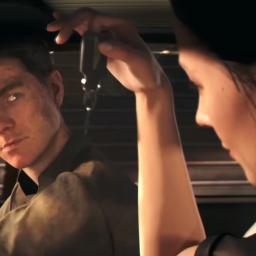 |
by Lawrence Bonk on (#72C5B)
IO Interactive's James Bond simulator 007 First Light has been delayed until May 27, 2026. It was supposed to come out in March. The company says two-month delay is for polish and refinement, which is fine by me. I'd always rather wait a bit longer for a better end product.IO says the game is already "fully playable from beginning to end" but still needs a bit of attention to ensure "the strongest possible version at launch." The developer promises to share more updates at the beginning of next year.For the uninitiated, 007 First Light is the first James Bond game in over a decade. The developer is the same organization behind the renowned Hitman franchise, so this could potentially be the best Bond game since Goldeneye.The gameplay looks fast-paced, frenetic and filled with spycraft. It features an original story that pulls from all over the decades-long franchise. We got a chance to speak to narrative director Martin Emborg and he noted that the game stars a young and inexperienced Bond, which seems to be the direction Amazon is taking with its upcoming film.The game also boasts a pretty stacked cast. Patrick Gibson, from The OA and Dexter: Original Sin, plays the famous lothario spy and Lenny Kravitz has been cast as the primary villain. Other cast members include Lennie James, Kiera Lester, Alastair Mackenzie and Priyanga Burford.Who knows when the next Bond film will actually come out, so this should be a nice little stopgap for fans.This article originally appeared on Engadget at https://www.engadget.com/gaming/io-interactives-007-first-light-has-been-delayed-until-may-27-194809718.html?src=rss
|
 |
by Devindra Hardawar on (#72C2Y)
Over the past two years, the Nex Playground has carved out a niche for itself with kids and parents alike. It's a small box that sits in front of your TV and uses a camera, along with computer vision AI processing, to track your movement for interactive games. Think of it like a simplified version of Microsoft's Kinect (RIP), with a bit of the local multiplayer we see from the original Wii. In this bonus episode, we chat with David Lee, Nex's CEO and co-founder, about how he went from building a basketball tracking app to one of the most intriguing gaming console alternatives on the market. (The Nex Playground even managed to outsell Xbox in November!)Subscribe!
|
 |
by Lawrence Bonk on (#72C08)
Xbox has brought cloud gaming gaming to some Amazon Fire TV models. These include the Fire TV 4-Series and the Fire TV Omni QLED Series. This lets people play Xbox games directly on the television, without needing a bulky console or even something like a Fire TV stick.Gamers do need a couple of things. First and foremost, this service requires a subscription to Game Pass. Plans start at $10 a month and shoot all the way up to $30 per month. They'll also need a compatible wireless controller, though most Bluetooth-enabled gamepads should work.AmazonThe feature works for every game on the Game Pass platform and will also stream many titles that people own outright via the "stream your own game" feature. This won't work with everything, but hundreds of titles are supported.Amazon says this is just the beginning and that more TV models will receive the functionality in the future. Xbox Game Pass became available on select Amazon streaming devices earlier this year. Today's move makes sense, given that Fire TVs and the company's streaming sticks use the same OS.This article originally appeared on Engadget at https://www.engadget.com/gaming/xbox/xbox-cloud-gaming-comes-to-newer-amazon-fire-tv-models-163517432.html?src=rss
|
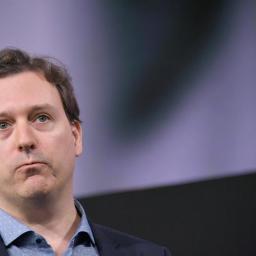 |
by Andre Revilla on (#72C09)
Investigative reporter John Carreyrou of the New York Times filed a lawsuit against xAI, Anthropic, Google, OpenAI, Meta and Perplexity on Monday for allegedly training their AI models on copyrighted books without permission. Carreyrou is perhaps best known for exposing the Theranos fraudulent blood test scandal.According to Reuters, the lawsuit was filed alongside five other writers who all claim big tech companies have been violating their intellectual property rights in the name of building large language models.This comes after a banner year for IP lawsuits against AI companies brought by rights holders. Just about every type of entity that deals in protected content has gone to court against AI companies this year, from movie studios like Disney and Warner Bros. to papers like the New York Times and the Chicago Tribune. Some of these cases have led to settlements in the form of partnerships, such as the licensing deal between Disney and OpenAI.It's notable that this case is being brought by a small group of individuals instead of as a class action, something the authors involved say is no accident. "LLM companies should not be able to so easily extinguish thousands upon thousands of high-value claims at bargain-basement rates," the complaint reads. This is also the first case of its kind to list xAI as a defendant.A spokesperson for Perplexity told Reuters that the company "doesn't index books." Anthropic, for its part, is no stranger to lawsuits from book publishers, having recently settled a class-action lawsuit brought by half a million authors for $1.5 billion. Apple was also sued earlier this year amid similar allegations. This latest complaint mentions the Anthropic settlement specifically, saying that class members in that case will only receive "a tiny fraction (just 2 percent) of the Copyright Act's statutory ceiling of $150,000."Engadget has reached out to xAI, Anthropic, Google, OpenAI, Meta and Perplexity for comment and will update with any response.This article originally appeared on Engadget at https://www.engadget.com/ai/new-york-times-reporter-files-lawsuit-against-ai-companies-161624268.html?src=rss
|
 |
by Steve Dent on (#72BVP)
Apple is making it a little easier to use third-party devices with iPhones in order to comply with Europe's Digital Market Act (DMA), MacRumors reported. For iOS 26.3, Apple's devices will support third-party proximity pairing and notifications in Europe only, according to the latest beta notes. That will make it a bit easier to connect devices like Sony headphones or receive notifications from an iPhone on Wear OS smartwatches - provided manufacturers support the new feature."The DMA creates new opportunities for developers to bring to market innovative products and services in Europe," an EU spokesperson told The Wall Street Journal. "This is another step towards a more inter-connected digital ecosystem to the benefit of all EU citizens." The EU Commission added that the functionality will be "fully available" in the bloc in 2026.The new capabilities are as follows:
|
 |
by Valentina Palladino on (#6T3XY)
This late in the game, it's not possible to ship gifts to friends and family and have them arrive before the holidays. But that's ok because it's never been easier to give a digital gift that will arrive basically whenever you want it to. If you're looking for more creative digital gift ideas, we've got you covered. But right now, you may just be looking for the best gift card ideas that you can buy online and digitally send to the people you love. We've got you covered: these are the best gift cards to send as last-minute gifts this year. Best gift cards to give for the holidays Check out the rest of our gift ideas here. This article originally appeared on Engadget at https://www.engadget.com/the-best-gifts-cards-to-give-this-holiday-season-amazon-apple-best-buy-and-others-110032592.html?src=rss
|
 |
by Devindra Hardawar on (#72BVQ)
Want to see a dead body? I present to you the Xbox. After a subdued launch at the height of the COVID pandemic in 2020, the Xbox Series X quickly lost the fight against the PlayStation 5. Microsoft simply couldn't deliver enough compelling games, despite some huge acquisitions, while Sony leaned on its goodwill from the PS4 era and a handful of desirable exclusives. As prices rose due to supply chain issues and the Trump administration's volatile tariff scheme, there was even less of a reason to get an Xbox (even the cheaper Series S). When I re-reviewed the Series X last year, it was clear that it never lived up to its potential. Anyone in their right mind would be better off buying a PlayStation 5.Xbox didn't enter 2025 in a great state, and it's leaving the year grasping for help, like an Arc Raider player desperate for a revival after being knocked out. Microsoft cancelled the Perfect Dark reboot and Everwild, two of the most interesting games in its weak upcoming slate. The company brought titles like Forza Horizon 5 over to the PlayStation 5, which prompted Engadget Deputy Editor Nathan Ingraham to declare he no longer needed an Xbox.Xbox Series X controllerEngadgetMaking things worse this year, Microsoft raised prices across the board, with the Xbox Series S starting at $400 and the cheapest Series X going for a whopping $600. And slow sales prompted Costco to stop selling Xbox consoles entirely. Microsoft didn't even try to push systems during Black Friday - why go through the trouble of having sales if nobody is buying the hardware in the first place?Even Game Pass, which was once renowned as one of the best deals in gaming, almost doubled in price over the last year, reaching up to $30 a month (or $360 a year) for the Ultimate tier. Sure, Microsoft tried to add more value to its cheaper Game Pass tiers, and finally upgraded its cloud streaming platform, but the lack of consistent must-play exclusive titles has devalued the service (and Xbox as a whole). Avowed and South of Midnight were among the few exclusive highlights, but the latter will hit PS5 and Switch 2 next year. There's no word on Avowed reaching other consoles yet, but given Microsoft's current trajectory (and the fact that it's a genuinely great game), I wouldn't be surprised if it becomes available elsewhere.There was a chance for Microsoft to reinvigorate the Xbox brand with the ASUS ROG Xbox Ally and Ally X gaming handhelds, but the $600 and $1,000 launch prices placed them out of reach for most gamers. It also doesn't help that Windows still isn't well-optimized for portable devices with touchscreens, and those systems also aren't compatible with older Xbox titles like the consoles. At the very least, Microsoft now has a handheld foothold. But a future portable Xbox console would need to be significantly cheaper to compete with the likes of the Steam Deck, which starts at $549 (following the discontinuation of the $400 LCD model).And speaking of Valve, the company's recently announced Steam Machine has also stolen a lot of potential thunder from Xbox. The Steam Machine is basically a tiny gaming desktop for your TV, running the Steam Deck's SteamOS. That platform is a Linux distribution optimized for emulating Windows titles. But unlike an Xbox console, it's not closed off in any way. You're free to install whatever you'd like on a Steam Machine - even Windows!While we still haven't seen the Steam Machine in action, the Steam Deck's excellent performance and game compatibility makes me think its desktop sibling could be genuinely compelling to console players looking for something new. And it will likely directly compete with the next Xbox, which is rumored to arrive in 2027 as a PC in a TV-friendly case (according to Windows Central's Jez Corden). Microsoft's recent partnership deal with AMD also hints at a more PC-like experience - Xbox President Sarah Bond noted that the Xbox team is "working closely with the Windows team to ensure that Windows is the number one platform for gaming."It's worth remembering that only a single generation of the Xbox - the Xbox 360 - was successful enough to truly compete with Sony's PlayStation. The original Xbox reportedly cost Microsoft $4 billion over the course of four years, leading the company to quickly jump ship and move to its successor. The Xbox 360 was genuinely innovative, thanks to Xbox Live and smarter online integration, and it had a healthy amount of third-party support. In comparison, Sony's PlayStation 3 was $100 to $200 more expensive than the Xbox 360 at launch, it had far worse online support and developers found it hard to program for.Xbox Series XDevindra Hardawar for EngadgetUnfortunately, Microsoft squandered most of its good will with the Xbox One. That console was first announced as an "always online" device with restrictive DRM features that limited how you could share and sell games; it was bundled with a Kinect camera that could potentially surveil you; and at $499, it was $100 more than the PlayStation 4. Microsoft quickly reversed many of its DRM-heavy plans for the Xbox One, but by that point the damage was done. Sony ultimately sold more than twice as many PS4 units as the entirety of the Xbox One family (which included the cheaper One S and more powerful One X), according to data from Ampere Research.Things are looking worse this generation: The Xbox Series S and X reportedly only sold around 33 million units as of July, according to Statista estimates, while Sony confirmed it sold 84.2 million PS5s as of November. If this trend continues (and it doesn't appear as if Xbox sales will be increasing any time soon), Sony could end up selling three times as many consoles this generation, compared to Microsoft. Xbox sales have been so slow that the family-focused Nex Playground managed to outsell it in November, according to data from Circana.Given Xbox's inability to compete with the PlayStation 5, it's no wonder Microsoft could be changing things up entirely for its next system. Its partnership with AMD could easily lead to new handhelds, and it also gives Microsoft a leg up in producing a compact and powerful Xbox PC. After all, why should the company keep trying to go toe-to-toe with Sony's closed PlayStation platform? Why shouldn't Microsoft embrace its PC roots to give us a gaming desktop under our TVs? The company has already committed to bringing new Xbox games to PCs immediately, so the line between the two is already blurring.It may be a risk, but evolving into a PC proves there's still life in the Xbox brand. And crucially, it's also something Sony can't easily replicate.
|
 |
by Ian Carlos Campbell,Cherlynn Low on (#71YVH)
As we hurtle towards the end of the year, the shadow of CES hovers on the horizon. Tech's biggest annual conference is starting in just under two weeks, and we already know some of the products and announcements that could be in store. The CES 2026 show floor is officially open from January 6 through 9, but the fun kicks off with events on Sunday January 4 and a host of press conferences on Monday. As always, product demos, announcements and networking will be happening at the Las Vegas Convention Center and other hotels all over the city. As usual, Engadget will be covering the event in-person and remotely, bringing you news and hands-ons straight from the show floor.More specific details and pre-announcements are already trickling out as CES approaches, and thanks to the CTA's schedule we also do know what companies will be hosting press conferences. We're also using our experience and expertise to predict what tech trends could rear their heads at the show.What we already know aboutPress conferences and show floor booths are the bread and butter of CES. The Consumer Technology Association has already published a searchable directory of who will have a presence at the show, along with a schedule of every official panel and presentation.On Sunday, January 4, Samsung will kick-off CES with "The First Look," a presentation hosted by TM Roh, the CEO of Samsung's DX Division, on the company's "vision for the DX (Device eXperience) Division in 2026, along with new AI-driven customer experiences."That'll be followed by multiple press conferences throughout Monday, January 5. LG is hosting its "Innovation in Tune with You" presentation to share "its vision for elevating daily life through Affectionate Intelligence" at the start of the day, Intel is launching its new Core Ultra Series 3 processors in the afternoon, Sony Honda Mobility is holding a press conference on its first car and AMD CEO Lisa Su will cover AMD's upcoming chip announcements at a keynote address that closes out the day.On the week of December 15, the CTA added a keynote by NVIDIA CEO Jensen Huang to its schedule. The event will take place on January 5 at 1PM PT and, according to the website, will last about 90 minutes. Based on the description on the listing, the presentation will showcase the latest NVIDIA solutions driving innovation and productivity across industries."Finally, on Tuesday, January 6, Lenovo CEO Yuanqing Yang will host Lenovo's Tech World Conference at Sphere, using the large and decidedly curved screen to share the company's "commitment to delivering smarter AI for all by constantly redefining how technology can engage, inspire, and empower." It's worth noting that Lenovo is the parent company of Motorola, which still makes phones and foldables that feature AI tools, so it's possible those devices feature in the presentation as well.As they typically do, some companies have already gotten a headstart on the CES news by publicly sharing their announcements in the weeks leading up to January. LG, for example, has said it will debut its first Micro RGB television at CES. While details are scarce, the company's press release for the LG Micro RGB evo did confirm it has received certifications by Intertek for 100 percent color gamut coverage in DCI-P3 an Adobe RGB, and that it has more than a thousand dimming zones for brightness control.Not to be forgotten, Samsung also announced it will be launching a whole lineup of Micro RGB TVs at CES. The company already introduced its first Micro RGB TV at CES 2025, which was a 115-inch model available for a cool $30,000. Next year, Samsung is expanding the range with 55-, 65-, 75-, 85-, 100- and 115-inch models that use the next evolution of the company's Micro RGB technology.Outside of the formal introduction of new products and initiatives, reading the tea leaves of what was announced last year and what companies are reportedly working on, we can make some educated guesses at what we could see at CES 2026.New chips from AMD, Intel and QualcommCES is frequently the start of a cascade of new chip announcements for a given year, and one of the first places new silicon appears in real consumer products. AMD will likely use its keynote to introduce new versions of its Ryzen chips, including the recently spotted Ryzen 7 9850X3D, which is expected to offer better single-threaded performance, and the Ryzen 9000G series, which could be built with AMD's Zen 5 architecture. The company might also use its CES stage to go over its new FSR Redstone AI upscaling tech.Intel has already publicly announced that it'll launch its Panther Lake chips at CES 2026. The officially titled Intel Core Ultra Series 3 chips fit into Intel's overall "AI PC" push, but are specifically meant for premium laptops. Based on a preview from October 2025, Intel says the first chip made with its 2-nanometer 18A process will offer 50 percent more processing performance than previous generations and for the chip's Arc GPU, a 50 percent performance bump from last generation.Qualcomm is also rumored to be targeting laptops at the show, building on the work it's done moving its Snapdragon chips out of phones and tablets and into other types of computers. The company's Snapdragon X2 Elite and X2 Elite Premium chips should start appearing in laptops at CES 2026, offering a look at the improved speed and AI performance the company promised in 2025.Brighter, "truer" screensSony announced a collection of new Bravia TVs in April 2025, replacing the company's flagship, filling in its midrange options and adding a new budget model to the mix. The star of this updated Bravia lineup is the Bravia 9, which features a QD-OLED panel, but Sony appears to be prepping entirely new display tech for 2026. In March 2025, Sony introduced a new RGB LED panel that uses individual Mini LED backlights colored in red, green and blue to produce even brighter, more accurate colors. In contrast to a QD-OLED, which filters a layer of blue organic light emitting diodes through quantum dots that change color, Sony's "General RGB LED Backlight Technology" can get as bright as a Mini LED panel without needing an extra filter layer or worrying about OLED's problems with burn-in.The company has already trademarked the name "True RGB," which could end up being what Sony calls this new flavor of display if it decides to show them off at CES. It seems entirely likely, because CES is nothing if not a TV show - it's a sure bet that we'll see new TVs from the likes of LG and Samsung in addition to Sony. If the company doesn't introduce new display tech for its TVs, it does have a new 240Hz PlayStation monitor coming in 2026 that it could show off at CES instead.Sony isn't the only company hyped on bright screens. Samsung is reportedly pushing an updated version of the HDR10 and HDR10+ standards that could be ready to demo at CES 2026. The new HDR10+ Advanced standard would be Samsung's answer to Dolby Vision 2, which includes support for things bi-directional tone mapping and intelligent features that automatically adapt sports and gaming content. Samsung's take will reportedly offer improved brightness, genre-based tone mapping and intelligent motion smoothing options, among other improvements.Ballie Watch 2026The ball-shaped yellow robot lovingly known as "Ballie" has been announced twice, first in 2020 and then again in 2024 with a projector in tow. Samsung said Ballie would go on sale in 2025 at CES last year and then shared in April 2025 that Ballie would ship this summer with Google's Gemini onboard. But it's nearly 2026, and Ballie is nowhere to be seen. It's possible Samsung could make a third attempt at announcing its robot at CES 2026, but whether or not it does, robotics will still be a big part of the show.Robot vacuums and mops were a major highlight of CES 2025, and it's safe to expect notable improvements from the new models that are announced at CES 2026. Not every company will adopt the retractable arm of the Roborock Saros Z70, but robot vacuums with legs for rising over small ledges like the Dreame X50 seem like they could become the norm. Roborock could also show off its new Roborock Qrevo Curv 2 Flow, the first of its robot vacuums to feature a retractable roller mop.Beyond just traversing spaces more efficiently, improving robots' navigation could also be a major concern at the show. Prominent members of the AI industry are turning their attention from large language models to world models, which aim to give AI a deep understanding of physical space. Those world models could be the key to making robots, bipedal or otherwise, competent at navigating homes and workplaces, and will likely be a significant talking point at CES 2026.We'll be updating this article throughout the month as more rumors surface and new products are confirmed -stay tuned for future updates!Update, December 11 2025, 11:03AM ET: This story has been updated to include detail on Lenovo being Motorola's parent company and how the latter might have a part in the Tuesday presentation.Update, December 16 2025, 1:33PM ET: This story has been updated to include the NVIDIA press conference, which was added to the CTA schedule within the last two days.Update, December 23 2025, 7:28AM ET: This story has been updated to include LG and Samsung's Micro RGB TV announcements, which were made public in the past seven days. The intro was also tweaked to reflect how soon CES is at this point.
|
 |
by Mat Smith on (#72BSS)
As many of us hunker down for the holidays, you might want to tackle some of the best games we've seen this year: the long-time-coming Silksong, the critically acclaimed (and sumptuous) Expedition 33 and the bizarre world of Baby Steps.EngadgetNot to mention the Switch 2, which is slowly building out its own exclusive library with Metroid Prime 4 and Donkey Kong Bananza. Rare for me, this year, I've played many of the new games we've picked. Brag. I'd recommend both Dispatch and Blue Prince - I still haven't completed the latter, but, yes, I've unlocked the secret elevator.And if you don't have access to your usual PC or console setup, there are some smartphone games worth your time, including Spooky Express, Is This Seat Taken and, well, Umamusume: Pretty Derby, a reimagined world of horse racing where the horses are anime girls with horse ears. Try explaining that to your uncle over dinner.- Mat SmithThe other big stories (and deals) this morning
|
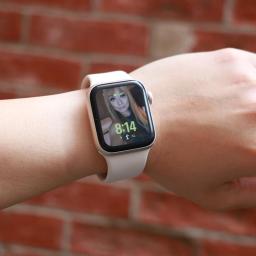 |
by Rob Webb on (#72BST)
Giving a child an Apple Watch can offer extra peace of mind and tools that promote independence in a controlled way. Apple's Family Setup feature makes it possible for a kid to use an Apple Watch without owning an iPhone, and the feature set has expanded thanks to recent watchOS updates. It supports communication controls, location tools, Schooltime limits and privacy protections that allow a parent or guardian to manage how the device is used throughout the day.The setup process begins with creating or signing in with a child's Apple ID. It continues with adding them to your Family Sharing group on an iPhone and pairing a compatible Apple Watch through the Apple Watch app. Once the watch is linked, you can adjust a range of parental controls that shape how the watch works at home, at school and when the child is out and about.Confirm device compatibilityFamily Setup requires a cellular-capable Apple Watch such as the Apple Watch SE or Series 6 or later. A cellular connection allows the watch to operate independently without an iPhone nearby. The watch must be running a recent version of watchOS and the iPhone used for setup must be running the latest iOS version.If the watch is not new, it needs to be erased before it can pair with a new user. This can be done directly on the watch through the Settings menu by choosing the general reset option. Once the device is reset it can be paired again from the Apple Watch app.Create or prepare your child's Apple IDFamily Setup relies on each child having their own Apple ID. This allows their data, messages, activity goals and device settings to remain separate from other people in the household. If your kid already has an Apple ID, it can be used during setup. If they do not have one, the Apple Watch app will prompt you to create one as you go through the pairing process.A child's Apple ID is linked to Family Sharing, which lets the organizer manage permissions from a single iPhone. A parent or guardian can approve contacts, handle screen time requests and view location updates without needing to touch the watch itself. Setting this up first ensures that the watch can be paired smoothly later.Add the child to Family SharingFamily Sharing is the foundation for managing the watch, and it's all controlled through the Settings app on your iPhone. Once Family Sharing is open you can tap the option to add a family member then follow the prompts to link the child's Apple ID to the group. This also makes you the family organizer, which gives you control of purchase approvals, communication limits and other shared features.Once the child is added to Family Sharing their information becomes available when you begin pairing the Apple Watch. This makes the process faster since the watch can immediately associate itself with the correct Apple ID.Pair the watch using Family SetupTurn on the Apple Watch and place it near your iPhone. A prompt should appear directing you to use your iPhone for setup. If the prompt does not appear, you can open the Apple Watch app, go to All Watches and choose Add Watch. The app will then ask if the device is being set up for you or for a family member. Choose the family member option and continue.The camera on your iPhone is used to pair the devices. Align the Apple Watch face inside the frame on your screen until the pairing animation is recognized. Once the connection is made the app will ask which family member the watch is for. Select the child's profile to continue through the remaining steps.The app will guide you through choosing which wrist the watch will be worn on, setting a passcode, signing in with the child's Apple ID and enabling services such as Siri and location tracking. You can also set up activity goals tailored to the child's age and fitness level.Manage the watch from your iPhoneOnce the Apple Watch is paired, the Watch app becomes the main place to manage how it works. The Family Setup interface is designed to give parents and guardians control without needing to handle the watch directly. Most adjustments can be made at any time from the iPhone used for setup.Screen Time controls allow you to set limits for communication and app use. You can restrict access to certain features during specific times of day, create downtime schedules and manage content restrictions for websites and apps. These settings mirror the Screen Time system used on other Apple devices which makes it easier to keep rules consistent across the household.Approved contacts can be managed through the communication limits menu. This ensures that the child can send messages and make calls only with approved people. If you add or remove contacts, they are updated instantly on the watch.Location sharing is handled through the Find My app. You can view the child's location and set notifications that alert you when they arrive at or leave a particular place. This is useful for school pickups or after-school activities. The watch uses on-device processing for location and messages which helps maintain privacy.Configure Schooltime and Focus modesSchool time is one of the most important parental controls for younger users. It limits interaction with the watch during school hours by locking access to most apps and features. Only the time and a simple yellow icon appear on the screen while Schooltime is active. You can schedule Schooltime from the Apple Watch app so that it automatically turns on and off at the right times each day.Focus modes offer another layer of control. These modes can reduce distractions during homework, bedtime or other family routines. Each Focus mode can limit notifications and activity alerts so the child is not interrupted when they need to concentrate.Set up safety featuresEmergency SOS is enabled during setup and can be managed afterward in the Apple Watch app. It allows the child to contact emergency services by holding the side button. You can also assign an emergency contact who will receive a notification if SOS is triggered.The Medical ID should include relevant details such as allergies or medical conditions. This information can be accessed by emergency responders if needed.Adjust privacy and communication settingsThe watch uses on-device processing for messages, location and Siri requests which helps protect your child's data. Location sharing can be turned on or off at any time and you can manage which apps are allowed to use location services. Communication permissions can also be updated as the child's needs change.Apps installed on the watch can be controlled from the Apple Watch app. You can remove apps, restrict access or hide notifications at any time to maintain a balanced experience.This article originally appeared on Engadget at https://www.engadget.com/wearables/how-to-set-up-an-apple-watch-for-a-child-120051230.html?src=rss
|
 |
by Igor Bonifacic on (#63D94)
Upgrading to a good SSD can make your computer feel brand new again. Apps open faster, files move in a blink and even older machines start to feel a lot more responsive. It is one of the easiest ways to breathe life into a laptop or desktop without replacing the whole system, and the performance boost is something you notice right away.
|
 |
by Engadget on (#6XRTY)
Whether you just got a Switch 2 or you've had yours for a while, you may want to grab some key accessories to make it fit your gaming style even more than it already does. Not only can the right accessories make it easier and more fun to play all of the games you love, but they can also make your gaming experience better in different environments, be it on the couch, in an airplane or in the car. We've got to try out some of the latest Switch 2 accessories, and some of our old favorites are also compatible with the new console. These are our current favorite Nintendo Switch 2 accessories, and we'll add to this list over time as we test out new gear. Best Nintendo Switch 2 accessories More Nintendo Switch 2 accessories Nintendo announced a bunch of new accessories when it revealed the Switch 2 earlier this year. Key among them are a new Switch 2 Pro controller, Switch 2 camera, an all-in-one carrying case and more. Our staff will be testing out a bunch of these accessories, and we'll keep our favorites list up to date as we do so. If you're interested in picking any of those new Switch 2 accessories up, you can find them at a variety of retailers: Joy-Con 2 bundle
|
 |
by Mariella Moon on (#72BNH)
The Federal Communications Commission has added foreign-made drones and their critical components to the agency's Covered List," making them prohibited to import into the US. In a public notice published by the FCC, it said several national security agencies have determined that umanned aircraft systems (UAS) and their critical components produced in foreign countries pose an unacceptable risk to the national security of the United States.UAS and UAS critical components must be produced in the United States," the agency said. UAS are inherently dual-use: they are both commercial platforms and potentially military or paramilitary sensors and weapons. UAS and UAS critical components, including data transmission devices, communications systems, flight controllers, ground control stations, controllers, navigation systems, batteries, smart batteries, and motors produced in a foreign country could enable persistent surveillance, data exfiltration, and destructive operations over U.S. territory, including over World Cup and Olympic venues and other mass gathering events."FCC Chair Brendan Carr clarified on X that the ban does not affect old drones. People can continue using the devices they've already purchased, and retailers can keep selling models that have already been approved by the agency. The new rule only applies to upcoming models. He also said that the Department of War or the Department of Homeland Security can allow specific new models, a certain class of drones or particular components to be sold in the US.
|
 |
by Andre Revilla on (#72BDW)
Anna's Archive, the open-source search engine for shadow libraries, says it scraped Spotify's entire library of music. The group acquired metadata for around 256 million tracks, with 86 million actual songs, and is just under 300TB in total size."A while ago, we discovered a way to scrape Spotify at scale. We saw a role for us here to build a music archive primarily aimed at preservation," the group said in a blog post. The pirated treasure trove of music represents over 15 million artists with over 58 million albums.The group intends to make all files available for download for anyone with the available disk space. "This Spotify scrape is our humble attempt to start such a preservation archive" for music. Of course Spotify doesn't have all the music in the world, but it's a great start," the group wrote. The 86 million songs that the group has archived so far represent about 99.6 percent of listens on the platform. This only represents about 37 percent of the total and the group still has millions left to be archived.The open-source site is normally focused on text like books and papers, which it says offers the highest information density. The group says its goal of "preserving humanity's knowledge and culture" doesn't distinguish between media types. Of course none of this is exactly legal, and the sharing or downloading of all these files is flagrantly in violation of IP protection laws.Anna's Archive contends that current collections of music, both physical and digital, are over-indexed to the most popular artists or composed of unnecessarily large file sizes due to collectors' focus on fidelity. The group says that what it's amassed is by far the largest music metadata database publicly available. The music files will be released in order of popularity in stages.Spotify has identified and disabled the nefarious user accounts that engaged in unlawful scraping," a spokesperson told Engadget in a statement. We've implemented new safeguards for these types of anti-copyright attacks and are actively monitoring for suspicious behavior. Since day one, we have stood with the artist community against piracy, and we are actively working with our industry partners to protect creators and defend their rights."Update, December 22, 2025, 10:45PM ET: This story has been updated to add Spotify's statement.This article originally appeared on Engadget at https://www.engadget.com/entertainment/streaming/pirate-group-annas-archive-says-it-has-scraped-spotify-in-its-entirety-211914755.html?src=rss
|
by Anna Washenko on (#72BBD)
Game developer Vince Zampella, known for his work on many popular first-person shooter franchises, has died. According to Los Angeles news channel NBC4, Zampella was killed in a single-vehicle car crash on Sunday along with one other unnamed person. He was 55.Zampella has helmed several well-known first-person shooter titles. He was a founder of Infinity Ward, where he was a creator of the Call of Duty series. Zampella remained at the company for the launch of the hugely popular franchise's first few installments. In 2010, he co-founded Respawn Entertainment, the studio behind Titanfall, Titanfall 2 and Apex Legends. Respawn was acquired by EA, and most recently, Zampella was leading DICE's studio in Los Angeles and headed up the Battlefield franchise, another FPS series that just saw the launch of Battlefield 6 earlier this year.EA shared the following statement about Zampella's death: This is an unimaginable loss, and our hearts are with Vince's family, his loved ones and all those touched by his work. Vince's influence on the video game industry was profound and far-reaching. A friend, colleague, leader and visionary creator, his work helped shape modern interactive entertainment and inspired millions of players and developers around the world. His legacy will continue to shape how games are made and how players connect for generations to come."Update, December 22, 2025, 3:53PM ET: Added statement from EA.This article originally appeared on Engadget at https://www.engadget.com/gaming/call-of-duty-co-creator-vince-zampella-killed-in-a-car-crash-204046354.html?src=rss
 |
by Lawrence Bonk on (#72B6N)
The Indie Game Awards has stripped Clair Obscur: Expedition 33 of two major awards, including Game of the Year and Debut Game. This is due to developer Sandfall Interactive's use of generative AI, as reported by Mashable.This looks to be fairly cut and dry. The awards ceremony clearly states in its FAQ that any game that uses generative AI in the development process would be "strictly ineligible" for nominations. It was recently revealed that Sandfall did indeed use generative AI while making Clair Obscur.
|
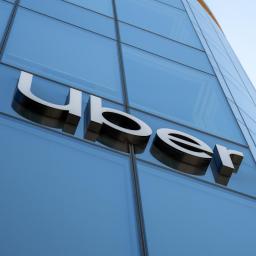 |
by Andre Revilla on (#72B6P)
An investigation by the New York Times into Uber's background checks and safety procedures for its drivers found a patchwork approach that opens the door for violent felons to drive for the ride-hailing platform.Uber outright rejects applicants convicted of murder, sexual assault, kidnapping and terrorism. However, in 22 states, the Times found Uber can approve applicants convicted of many other offenses including child abuse, assault and stalking, if the convictions are at least seven years old. The extensive investigation also found that in 35 states, these checks are based largely on where someone has lived in those seven years, meaning convictions from other locations could be missed.In 2017, Massachusetts conducted an audit of ride-hailing drivers in the state and ended up banning more than 8,000 drivers (about 11 percent) who were previously approved. Lyft, for its part, does not allow drivers with previous violent felony convictions regardless of how long ago the conviction was.In a document from 2015 reviewed by the Times, Uber executives discussed a strategy to "shift the conversation about safety from background checks to [less costly] initiatives proven to reduce incidents." A 2018 email from Uber's then head of safety communications described the company's background check policy as "a bare minimum."The Times compiled half a dozen examples of serious cases where Uber drivers with past violent convictions were later accused by passengers of sexual assault or rape. Two of those cases resulted in criminal convictions.Between 2017 and 2022, Uber's US operations received a report of sexual assault or sexual misconduct among almost every eight minutes, according to the company's own internal data. Uber said 75 percent of these reports were for "less serious" incidents such as flirting or making comments about a rider's appearance, and claimed that 99.9 percent of its rides take place without incident.This article originally appeared on Engadget at https://www.engadget.com/big-tech/uber-allows-violent-felons-to-drive-on-its-platform-investigation-finds-162721155.html?src=rss
|
 |
by Sarah Fielding on (#72B3V)
Paramount Skydance isn't giving up on obtaining Warner Bros. Discovery just yet. The company has amended its $108 billion offer to include Larry Ellison's "irrevocable personal guarantee" equaling $40.4 billion. Ellison is the founder or Oracle and a backer of Skydance, created by his son David Ellison, Paramount Skydance's CEO.On December 17, WBD formally recommended shareholders reject Paramount's offer. WBD had already accepted an $82.7 billion offer from Netflix, set to close some time next year following regulatory approval. "[The board] has unanimously determined that the tender offer launched by Paramount Skydance on December 8, 2025 is not in the best interests of WBD and its shareholders and does not meet the criteria of a 'Superior Proposal' under the terms of WBD's merger agreement with Netflix announced on December 5, 2025," WBD stated.The Paramount deal included backing by sovereign wealth funds in places like Saudi Arabia and Qatar. But the Ellisons previously said that, if the other funders dropped out, they would "backstop the full amount of the bid." That wasn't enough of a guarantee for WBD.Now, Paramount has returned with the irrevocable personal guarantee and an agreement that the senior Ellison won't "revoke" or "adversely transfer" the Ellison family trust's assets while the transaction is pending. WBD had stated that a personal guarantee was the only fix to Paramount's inadequate offer.Paramount might have taken this step, but not with a smile on its face: "None of these concerns, nor the demand for a personal guarantee, were raised by WBD or its advisors to Paramount in the 12-week period leading up to WBD agreeing to the inferior transaction with Netflix, Inc.," the company stated about its updated offer."Our $30 per share, fully financed all-cash offer was on December 4th, and continues to be, the superior option to maximize value for WBD shareholders. Because of our commitment to investment and growth, our acquisition will be superior for all WBD stakeholders, as a catalyst for greater content production, greater theatrical output, and more consumer choice," David Ellison stated. "We expect the board of directors of WBD to take the necessary steps to secure this value-enhancing transaction and preserve and strengthen an iconic Hollywood treasure for the future."Paramount's updated offer also includes publishing the trust's assets, more flexible transaction terms and an increase from $5 billion to $5.8 billion of its "regulatory reverse termination fee" - in line with Netflix's.Paramount's offer will expire on January 21, 2026.This article originally appeared on Engadget at https://www.engadget.com/entertainment/paramount-has-an-updated-warner-bros-discovery-bid-144348321.html?src=rss
|
 |
by Andre Revilla on (#72B3W)
Instacart has announced it will be ending price testing on its platform. This comes after a study published earlier this month revealed pricing experiments that led to some customers seeing higher prices than others and the FTC saying last week it would be investigating the grocery delivery app."Effective immediately, Instacart is ending all item price tests on our platform. Retailers will no longer be able to use Eversight technology to run item price tests on Instacart," an Instacart spokesperson shared with Engadget. The blog post called out "misconceptions and misinformation," maintaining that these price experiments were never the result of dynamic pricing and were never based on any personal or behavioral information about shoppers.In an earlier blog post responding to the study's allegations, Instacart said pricing changes were a "form of short-term, randomized A/B testing." The post referred to this process as "common in the grocery industry" and continued to paint the practice as a way to "invest in lower prices." It also highlighted that Instacart does not set the prices on its platform, which are set by retailers listed on the app.The company made clear that its retail partners will continue to set their own prices on the platform, which may vary by location just as they do in brick-and-mortar stores, but that Instacart will no longer support any item price testing services.This article originally appeared on Engadget at https://www.engadget.com/big-tech/instacart-is-ending-its-controversial-price-tests-134552152.html?src=rss
|
 |
by Sam Chapman on (#6G3C5)
Once upon a time, a "board game" meant Monopoly or Risk. Then several brave souls dared to ask the question: "What if this was fun?" Thirty years later, we're blessed with tabletop games that challenge our minds, immerse us in other worlds and conjure good times with those we love - sometimes all three at once. For your gift-buying needs, we've put together a list of new favorites and returning classics that run the gamuts of genre and weight. If you're ready to push beyond Pictionary, read on. Best board games to gift (and play) this holiday season Check out the rest of our gift ideas here. This article originally appeared on Engadget at https://www.engadget.com/the-best-board-games-to-gift-and-play-with-the-family-for-the-2025-holiday-season-125529223.html?src=rss
|
by Georgie Peru on (#72B1S)
The Nintendo Switch 2 supports a wide range of controllers, from Nintendo's own Pro Controller to many Bluetooth gamepads you might already have. Whether you're setting up your new console for the first time or adding extra controllers for multiplayer games, pairing them is simple as long as you know where to look. Here's how to connect the Switch 2 Pro Controller, how to sync additional Bluetooth controllers and what to do if something doesn't pair correctly.Before you start: What you'll needTo pair any controller with the Switch 2 you'll need the console powered on and updated to the latest system software. Navigate to System Settings, System then System Update to check. It also helps to have the controller charged, since some models need enough battery to begin pairing.On the Switch 2, all controller settings reside in the Controllers & Sensors section of System Settings. You can pair up to four controllers depending on the game and the controller type.How to pair the Switch 2 Pro ControllerNintendo's Switch 2 Pro Controller is the simplest device to connect, and it can be paired in two different ways: wired and wireless. If you're setting it up for the first time, the wired method is the fastest and most reliable.To pair the Switch 2 Pro Controller using a USB cable:
 |
by Sam Rutherford on (#72B1R)
It might be hard to believe, but foldable phones have already been around for the better part of a decade. Granted, the first one I saw back in 2019 - which actually predates Samsung's Galaxy Fold - was a cobbled-together mess. But since then, phone makers have been steadily iterating and tweaking their designs, and this year, manufacturers have finally addressed all the major issues about foldable phones except one: price.Let's go back to the OG Fold. Even though it was chunky and heavy, had a tiny exterior display and suffered from a hinge that let too much detritus inside (which is probably how The Verge's review unit got wrecked), it still showed so much promise. It was a true multitasker - a phone that could turn into a small tablet at a moment's notice. What's not to like?This scene would have sent shivers down my spine in previous years, but thanks to an IP68 rating for dust and water resistance, the Pixel 10 Pro Fold isn't bothered. Sam Rutherford for EngadgetFrom there, Samsung upgraded its foldables with water resistance and S Pen support on the Z Fold 3, followed by eliminating the gap between the two halves of a closed Z Fold 5. And as competition grew from OnePlus and Google (not to mention all the Chinese rivals like Oppo, Xiaomi and others), we saw design and software improvement across the category .In 2025, two phones in particular brought major upgrades to foldables as a whole. Even though its shape didn't change much from its predecessor, Google managed to get the Pixel 10 Pro Fold an IP68 rating for dust and water resistance - finally putting protection for both dirt and liquid in the same foldable for the first time. Now, for all the folks out there with regular phones, that might not sound like a big deal. But on devices with complicated hinges where you really don't want random garbage getting inside, that's a massive relief and a big improvement to the handset's general usability.If you only look at their dimensions, you'd be hard pressed to tell the difference between the Galaxy Z Fold 7 (right) and an S25 Ultra (left).Sam Rutherford for EngadgetMeanwhile, with the Galaxy Z Fold 7, Samsung achieved what may be an even bigger accomplishment by creating a foldable phone that was essentially the same size and weight as a traditional glass brick handset - with a massive 8-inch interior display no less. In fact, if you compared the Z Fold 7 to Samsung's other flagship - the S25 Ultra - the fold is actually a touch lighter (7.58 ounces vs 7.69 ounces) and practically just as thin (8.9mm vs 8.2mm). That's huge because one of the biggest issues with previous generations of foldables was excess bulk and heft, to the point where often I had to wear a belt just so my pants wouldn't sag when carrying one around.Unfortunately, there isn't a phone maker that has put both of these advancements into a single gadget just yet. But this is still a big deal, and based on how things are trending, I'm sure that won't be the case for long.What about the crease, you say? Yes, even the latest and greatest foldables still have a small depression that runs down the screen where the phone bends in half. Let me be clear: that's not really an issue. Sure, it would be nice if it weren't there, but getting mad about the crease is kind of like being annoyed at a convertible car that has some extra panel gaps because it has a retractable roof. Not only is the crease basically invisible when you are looking at it head-on (which is the vast majority of the time), in reality, people don't touch the dead center of their phone's display all that often - especially on a screen the size of a small tablet.The Z Fold 7 has made bulky foldables a thing of the past while the Pixel 10 Pro Fold shows how these phones don't need to be afraid of dirt anymore. Sam Rutherford for EngadgetReally, the one thing the makers of big foldables haven't figured out is how to make them affordable. OnePlus sort of came close in 2023 with the Open, which cost $1,500 after rebates that included trading in literally any phone (even broken ones). In fact, things are actually kind of going backwards. The launch price of the Z Fold 7 ($2,000) is $200 more than what the Z Fold 5 debuted at just a couple of years ago. Even with high prices, I've started seeing more and more foldable phones in the wild than ever before and the data backs up my sentiment. Sales of the Galaxy Z Fold 7 are up 50 percent compared to the previous generation while global foldable phone sales reached a new high in Q3 of this year, and I'm willing to bet that there are millions of others out there who would be interested in them - if only they didn't cost so much.
|
 |
by Steve Dent on (#72AZZ)
Waymo has resumed its robo-taxi service in San Francisco after a power outage stranded vehicles around the city, CNBC reported. The blackout, caused by a Pacific Gas & Electric (PG&E) substation fire, caused traffic light disruptions that affected Waymo's automated driving systems."Yesterday's power outage was a widespread event that caused gridlock across San Francisco, with non-functioning traffic signals and transit disruptions," a Waymo spokesperson told Engadget in a statement. "While the failure of the utility infrastructure was significant, we are committed to ensuring our technology adjusts to traffic flow during such events."Following the outage, which began at around 1:09 PM Saturday and peaked around two hours later, Waymo responded by suspending its ride-hailing services in the city. However, images and videos on social media showed the autonomous taxis stopped at intersections with hazard lights on.The company blamed its disruption on the size of the outage. "While the Waymo Driver [automated system] is designed to treat non-functional signals as four-way stops, the sheer scale of the outage led to instances where vehicles remained stationary longer than usual to confirm the state of the affected intersections. This contributed to traffic friction during the height of the congestion," the spokesperson explained, adding that Waymo's actions were "closely coordinated with San Francisco city officials."Still, the service disruption is a black mark for Waymo, as the sudden halt in service exacerbated traffic problems caused by the blackout. Elon Musk bragged on X that Tesla, Waymo's latest robo-taxi rival in the city, was "unaffected" by the power outage. However, Tesla's ride-hailing service is not yet fully autonomous and requires a human driver behind the wheel at all times.This article originally appeared on Engadget at https://www.engadget.com/transportation/waymo-vehicles-are-operating-again-in-san-francisco-following-a-power-outage-112924838.html?src=rss
|
by Valentina Palladino on (#6CSKH)
A tight budget does not mean you have to settle for a slow or outdated laptop. Many affordable models today offer solid performance for work, classes and everyday browsing, and some even pack in extras like bright displays or long battery life. Whether you need something for school, travel or streaming, there are plenty of budget laptops that deliver more value than you might expect.
 |
by Engadget on (#6H3YE)
We're almost out of time - the holidays are just about here, and if you're still doing your holiday shopping, you're not alone. Between wrapping things up at work before some well-deserved time off and making sure you have everything you need to host family and friends, it can be hard to find the time to go shop for some gifts. And if you're going to physical stores right now, you're probably being met with half-empty shelves. But the internet remains an option, even this late in the game: you still have time to buy holiday gifts online.
|
 |
by Jackson Chen on (#72AP2)
OpenAI gave its AI chatbot a professional makeover with the latest GPT-5.2 release, and some users are already complaining about its tone. For anyone who's finding ChatGPT rude or sassy, OpenAI has some welcome news since it's letting users further customize its personality with extra warmth or enthusiasm.
|
 |
by Jackson Chen on (#72AMW)
There may not be any reports of stick drift with the ROG Xbox Ally yet, but that doesn't mean there won't be. If you'd rather not end up with joysticks that have a mind of their own, GuliKit revealed its latest TMR Electromagnet Joystick Modules made specifically for your Xbox handheld.GuliKit said it worked directly with Asus to develop these joystick upgrades, which match the exact dimensions of the ROG Xbox Ally and Ally X's stock sticks. The aftermarket accessories company previously designed a Hall effect joystick upgrade kit for the ROG Ally X, but GuliKit said this mod features electromagnetic joysticks that not only address stick drift but are also more precise, durable, and power-efficient. GuliKit even made the joystick upgrades easy to install since there's no soldering required, and you can fine-tune the calibration in the handheld's system settings.It may feel excessive to spend more money on a gaming handheld that can cost up to $1,000, but neither the ROG Xbox Ally nor Ally X comes with Hall effect or electromagnetic joysticks. GuliKit's joystick upgrade is already available to US customers on its Amazon storefront for $19.99.This article originally appeared on Engadget at https://www.engadget.com/gaming/xbox/gulikits-20-mod-makes-the-rog-xbox-allys-joysticks-drift-free-190521030.html?src=rss
|
 |
by Jackson Chen on (#72AKJ)
Several of Waymo's autonomous vehicles were seen stuck in the middle of San Francisco streets following a significant power outage that took out the city's traffic lights. Waymo responded to the power outage by suspending its ride-hailing services in the city, but images and videos on social media showed the self-driving taxis stopped at intersections with hazard lights on."We have temporarily suspended our ride-hailing services in the San Francisco Bay Area due to the widespread power outage," Suzanne Philion, a spokesperson for Waymo, told Engadget in an email. "Our teams are working diligently and in close coordination with city officials, and we are hopeful to bring our services back online soon."The power outage was attributed to a fire at one of Pacific Gas & Electric (PG&E)'s substations. The incident began sometime on Saturday morning, which PG&E said affected approximately 130,000 customers. As of Sunday morning, the Californian power company said its crews have restored power to about 110,000 of those customers, while working on the remaining 21,000 customers in "the Presidio, Richmond District, Golden GateParkandsmall areasof downtownSan Francisco."Waymo hasn't provided an explanation as to why the power outage left its autonomous cars stranded in San Francisco streets, but this episode may have revealed a notable fault with the Waymo Driver system. Waymo indicates on its website that its autonomous driving system "responds to signs and signals, like traffic light colors and temporary stop signs," which could indicate that the self-driving cars struggled with the out-of-order street lights. Tesla's CEO, Elon Musk, also saw an opportunity to chime in on X, posting that "Tesla Robotaxis were unaffected by the SF power outage."This article originally appeared on Engadget at https://www.engadget.com/transportation/a-san-francisco-power-outage-left-waymos-self-driving-cars-stranded-at-intersections-172316970.html?src=rss
|
 |
by Rob Webb on (#71R8P)
Subscription boxes are the rare gift that keeps its charm long after the wrapping paper is gone. You make the choice once, but the surprises keep landing on their doorstep for months after that. For anyone who loves the buzz of a delivery, these are gifts that extend the season well past December. Each box on this list combines a bit of discovery with something tangible, such as gadgets, books, collectibles, snacks or clever projects. Some appeal to hardcore hobbyists, others to the curious or the comfort seekers, but all offer that same spark of delight that comes from unboxing something unexpected. If you want a present that's part experience, part surprise and fully enjoyable, this is a solid place to start. Best subscription box gifts Check out the rest of our gift ideas here. This article originally appeared on Engadget at https://www.engadget.com/the-best-subscription-box-gifts-for-2025-130037236.html?src=rss
|
 |
by Valentina Palladino on (#6G78D)
So you want to give someone a gift but you don't have a ton of cash to spare. Don't fret because first, you're not alone, and second, there are tons of options to choose from. Especially if you're looking in the tech space, it can feel especially daunting to find a gadget that's affordable but also worth gifting - in other words, not a piece of junk that will eventually take up residence at the bottom of a drawer. But you don't have to drain your wallet to get someone a cool gadget that will both be useful and make their lives easier. We've collected our favorite pieces of tech under $25 that make great gifts and help you to stick to a budget. Best gifts under $25 Check out the rest of our gift ideas here. This article originally appeared on Engadget at https://www.engadget.com/computing/accessories/the-11-best-gifts-under-25-for-2025-140042203.html?src=rss
|
 |
by Cheyenne MacDonald on (#72A86)
New York governor Kathy Hochul signed legislation on Friday aimed at holding large AI developers accountable for the safety of their models. The RAISE Act establishes rules for greater transparency, requiring these companies to publish information about their safety protocols and report any incidents within 72 hours of their occurrence. It comes a few months after California adopted similar legislation.But, the penalties aren't going to be nearly as steep as they were initially presented when the bill passed back in June. While that version included fines of up to $10 million dollars for a company's first violation and up to $30 million for subsequent violations, according to Politico, Hochul's version sets the fines at up to $1 million for the first violation, and $3 million for any violations after that. In addition to the new reporting rules, a new oversight office dedicated to AI safety and transparency is being born out of the RAISE Act. This office will be part of the Department of Financial Services, and issue annual reports on its assessment of large AI developers.Hochul signed two other pieces of AI legislation earlier in December that focused on the use of the technology in the entertainment industry. At the same time, President Trump has been pushing to curb states' attempts at AI regulation, and signed an executive order this month calling for "a minimally burdensome national standard" instead.This article originally appeared on Engadget at https://www.engadget.com/ai/governor-hochul-signs-new-yorks-ai-safety-act-220503930.html?src=rss
|
 |
by Jackson Chen on (#72A77)
Faraway road trips just got a lot easier, at least for the passengers. Sony Honda Mobility, the joint venture between the two Japanese conglomerates created to produce electric vehicles, announced that its Afeela EV will come with PS Remote Play. While playing video games in a car may be a niche feature, it means drivers will have something to do when parked, and passengers can chip away at their favorite RPGs during long drives.According to the announcement, the Afeela will be able to run your PS5 and PS4 consoles remotely through the infotainment system's integrated display. You can even grab your DualSense controller from home and get right back into the game after jumping in your Afeela. Sony Honda Mobility said a 5Mbps broadband connection is required to play, and a 15Mbps rate will deliver a smoother experience.It's not the first time we're hearing about PS Remote Play in an EV. The joint venture previously showed off the Afeela 1, which is set for its first deliveries in 2026, and its ability to remotely play PlayStation titles at CES 2024. As for gaming in EVs overall, Tesla famously offered Steam support for its Model S and X, but later removed this feature.This article originally appeared on Engadget at https://www.engadget.com/transportation/evs/sonys-first-ev-with-honda-will-let-you-remotely-play-ps5-in-your-car-202359091.html?src=rss
|